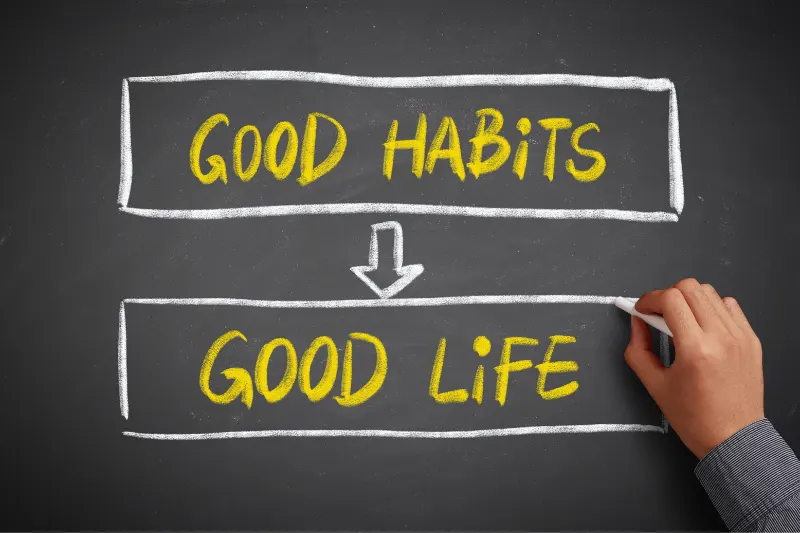
Patients struggle to comply with their home exercises. We know home
exercise plans get patients better and support injuries to recover. However, getting patients to do their exercises has been a challenge for Physios since the profession was formed in the 1800s. In Part 1 of this article, we explored why it’s not always the patient’s fault (CLICK HERE to see the full article). This article will explore some of the problems patients face when trying to adhere to an exercise-based plan and how implementing simple strategies can make all the difference.
Scheduling

At heart, I’m a procrastinator. My favoured excuses are “I didn’t have the time” or “I had too much on”. It has taken me many years and a lot of training to become that person who just gets stuff done.
A friend lent me Tim Ferriss’ book, The 4-Hour Workweek, which introduces the idea of Scheduling. Tim uses the concept to explain how high level executives, rather than writing to do lists, schedule time in their day to accomplish tasks. For example, drop the kids of at 7am, read 2 chapters of a book at 8am, rehab exercises at 9am and reply to emails at 10am. The benefit of scheduling is that you can plan days/weeks in advance and slot your rehab exercises in alongside the important things in your life. You can see ahead of time when you will be busy and reschedule your exercises to other parts of the day. The main premise is to have a to do list but also to assign a time and place for your exercises thus reducing the “I didn’t have the time” or “I had too much on” excuses.
Make It Social and Make It Fun

There are times when exercise is just not fun. It can be hard work, frustrating and at times boring. Some people also loath the idea of it and shut down and the mere thought of lifting a weight or going for a walk.
Personally, I almost never go for a bike ride by myself for the purpose of exercise. I find it dull, tedious and rather uncomfortable on certain areas of the body. Any more than about 10 minutes and I’m ready to do anything else. However, if a bunch of my friends are going for a 50km ride to a cool destination or on a previously unexplored track then sign me up! There’s something about doing an activity with friends that simply makes the pain of exercise not only bearable, but enjoyable. It also helps if there’s a tall glass of something cold and bubbly at the end of it!
If your Physio asks you to be more active by going for a 20-minute walk three times per week, consider talking to your partner or your child. Say to them “Come on, help me stick to my Physio’s prescription and go for a walk with me”. I’d be very surprised if they said no. The sense of comradery helps the exercise pill go down. And, if you do an exercise that you enjoy, you’re more likely to stick to it – the evidence is also clear on this. The message is that if you don’t like doing exercise then don’t. Simply do a social activity which is enjoyable and active at the same time.
Make it a Habit

As we’ve already seen, there are some people who don’t enjoy exercise; but is this an excuse? We know that as humans there are certain fundamental things we need to do to be healthy. For example, no one enjoys brushing their teeth, but we do it twice per day every day (or at least most of us do). I sincerely believe that exercise/activity should be a part of everyone’s weekly tasks. Therefore, exercise needs to become a habit. Last year, I read Atomic Habits by James Clear. He writes about the idea that significant change can come from tiny but consistent actions. By striving to do just a little more each day can lead to habit formation and therefore, behaviour change.
We all must start somewhere. Taking the stairs rather than the lift, parking further from the shops or saying to yourself before I sit down, I have to do 10 squats. These are all small ways to increase the amount of activity you do throughout the day. Clear also outlines four simple ways
to aid habit formation. He says that there are four rules to build habits: make them obvious, make it attractive, make it easy and make it satisfying. Without going into too much detail and spoiling the book, I’ll share a simple strategy that I’ve implemented to make going to the gym after work, much easier. I can find it difficult to motivate myself to go to the gym after a long day in the clinic. So, in order to mentally prepare myself, I’ve started getting changed before I leave work. Once I’m in my gym kit, it makes it far easier to go to the gym rather than giving myself an excuse on the drive home. A simple strategy but highly effective!
Conclusion
The techniques I’ve written about in this article are by no means exhaustive. They may not suit everyone’s personal preferences. But I wanted to show that very simple tweaks can make a massive difference when it comes to complying with rehab plans. In fact, these tips can apply to multiple aspects of daily life outside of being more physical. Why not give them a go and see how productive you can become.
